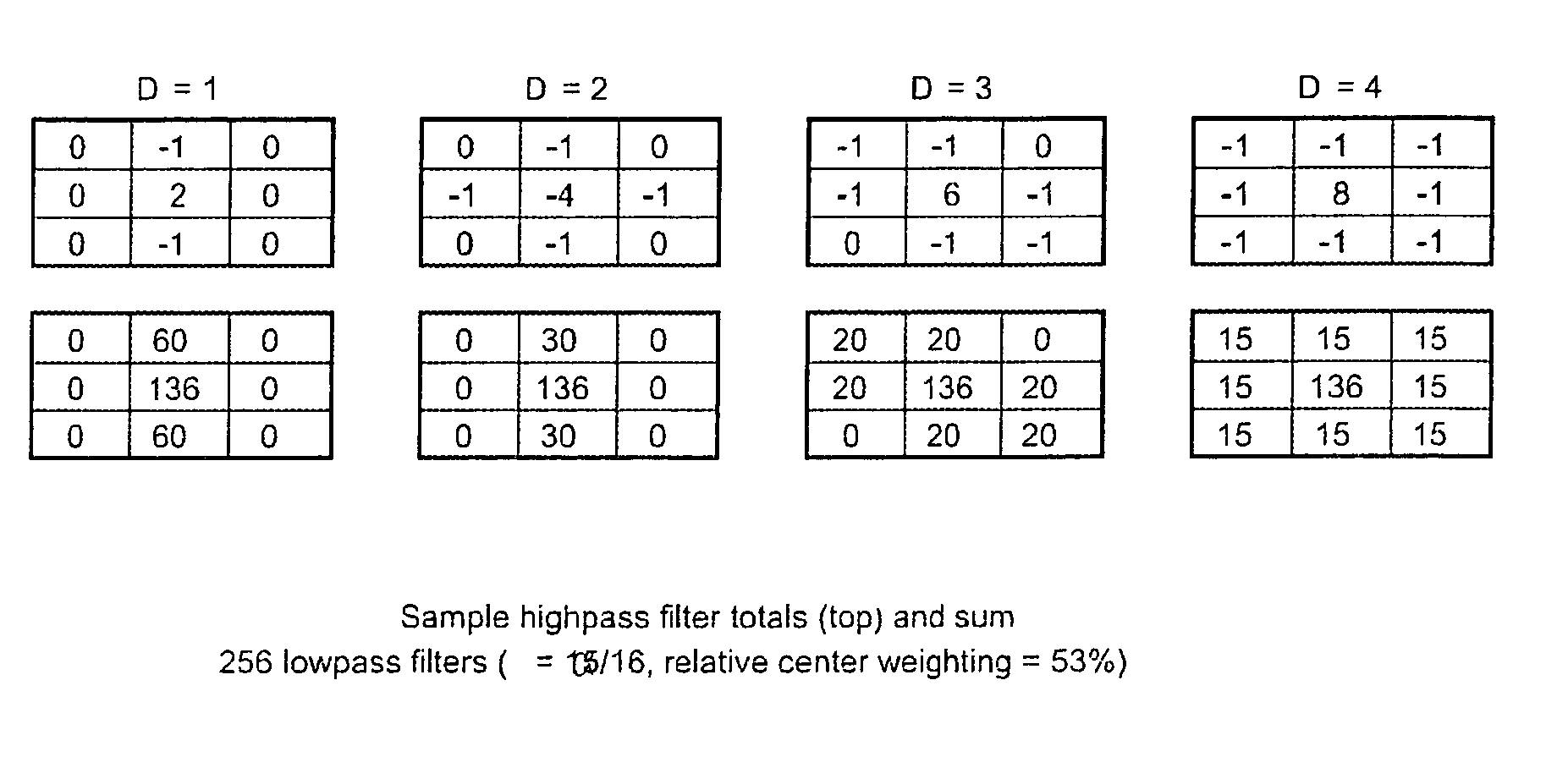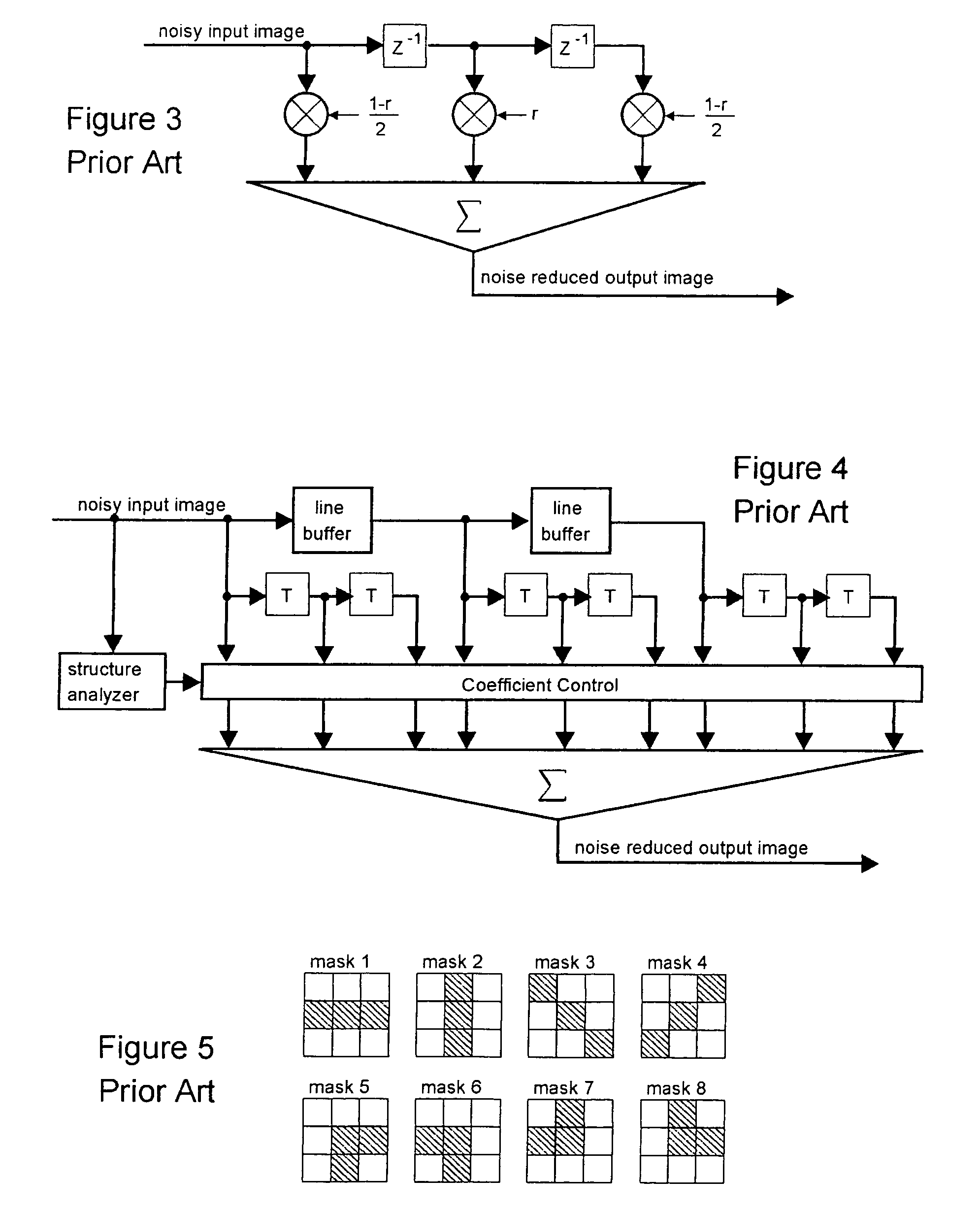Directional video filters for locally adaptive spatial noise reduction
a local adaptive and spatial noise technology, applied in the field of video signal processing, can solve the problems of increasing compression, noise may significantly reduce the effectiveness of compression schemes, and certain features of images, such as object edges, can look a lot like noise, so as to improve the quality of compressed video, reduce computational burden, and simple implementation
- Summary
- Abstract
- Description
- Claims
- Application Information
AI Technical Summary
Benefits of technology
Problems solved by technology
Method used
Image
Examples
Embodiment Construction
[0085]The invention relates generally to directional adaptive filters for spatial noise reduction pre-processing in conjunction with video compression. More specifically, the directionally adaptive spatial smoothing filters described herein are based upon applying low pass filtering only along object boundaries and unstructured areas so as to minimize the tendency to blur image edges.
[0086]Local edge detection for each pixel in an image may be accomplished by applying 3-tap high pass filters in eight directions to determine the best direction for local low pass filtering, such as has been described in “Perception Adaptive Temporal TV-Noise Reduction Using Contour Preserving Prefilter Techniques”, Jostschulte, K., Amer, A., Schu, M., Schroeder, H., IEEE Trans. of Consumer Electronics, Vol. 44, No. 3, pp. 1091-1096 (“Jostschulte”). Jostschulte has been discussed, hereinabove.
[0087]Several enhancements to the basic directional low pass filtering algorithm as presented in Jostschulte ha...
PUM
 Login to View More
Login to View More Abstract
Description
Claims
Application Information
 Login to View More
Login to View More - R&D
- Intellectual Property
- Life Sciences
- Materials
- Tech Scout
- Unparalleled Data Quality
- Higher Quality Content
- 60% Fewer Hallucinations
Browse by: Latest US Patents, China's latest patents, Technical Efficacy Thesaurus, Application Domain, Technology Topic, Popular Technical Reports.
© 2025 PatSnap. All rights reserved.Legal|Privacy policy|Modern Slavery Act Transparency Statement|Sitemap|About US| Contact US: help@patsnap.com



